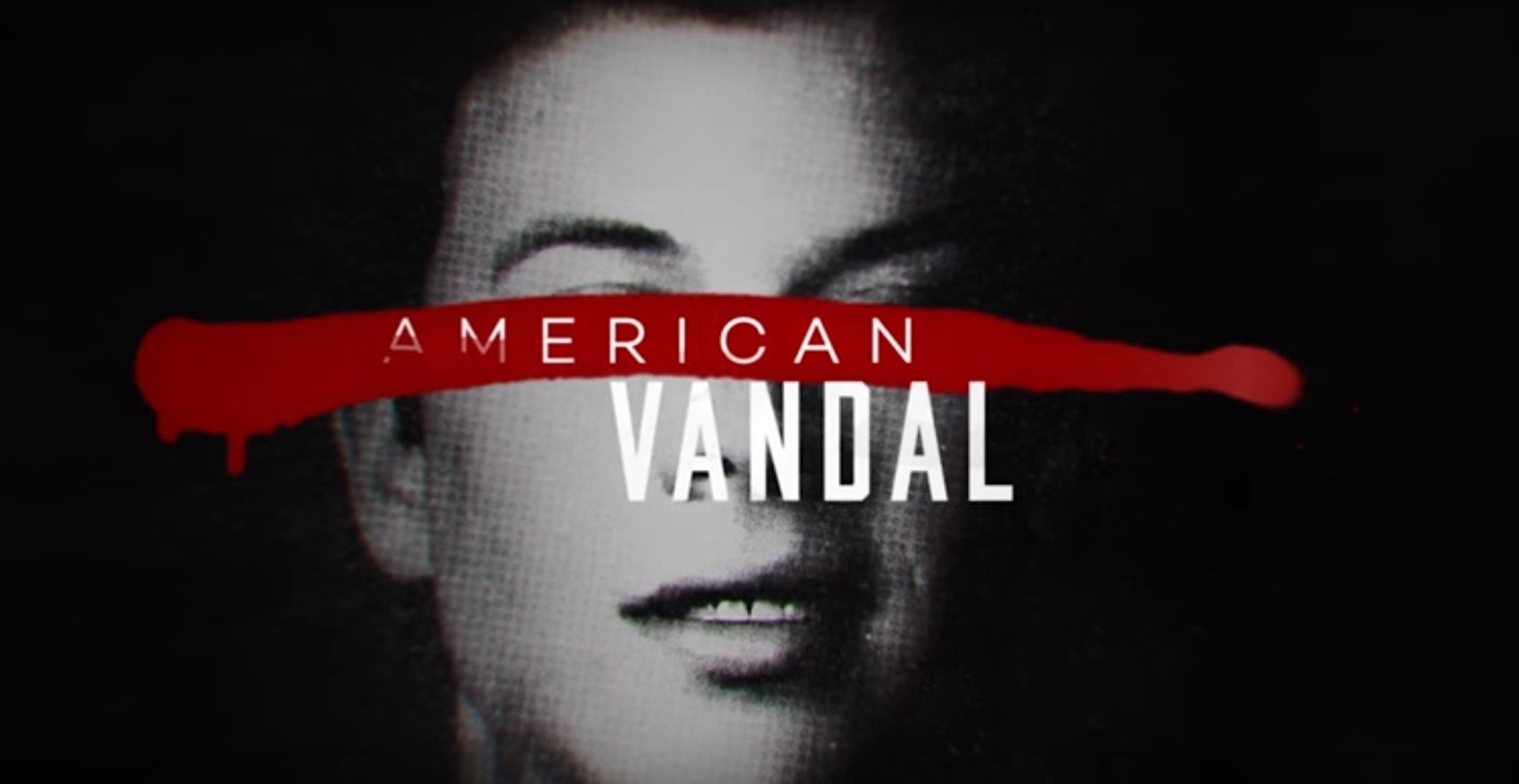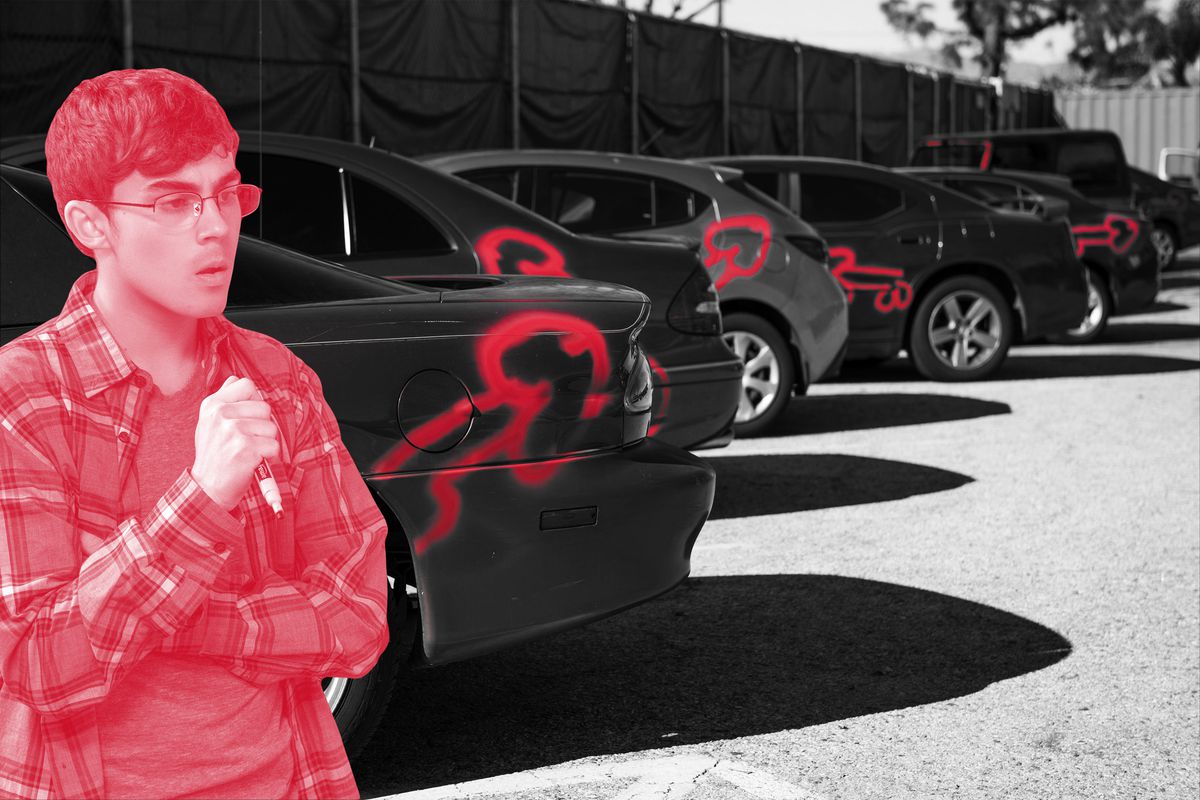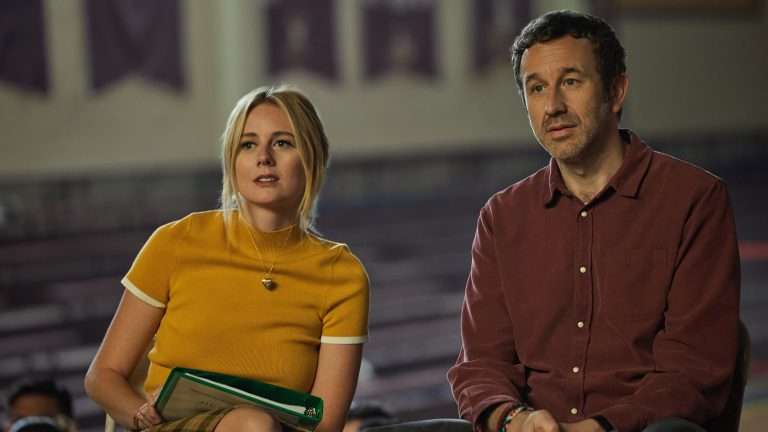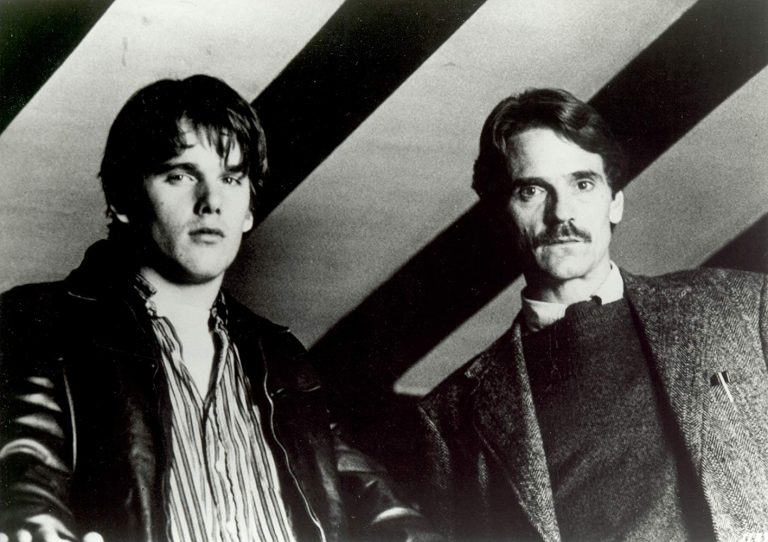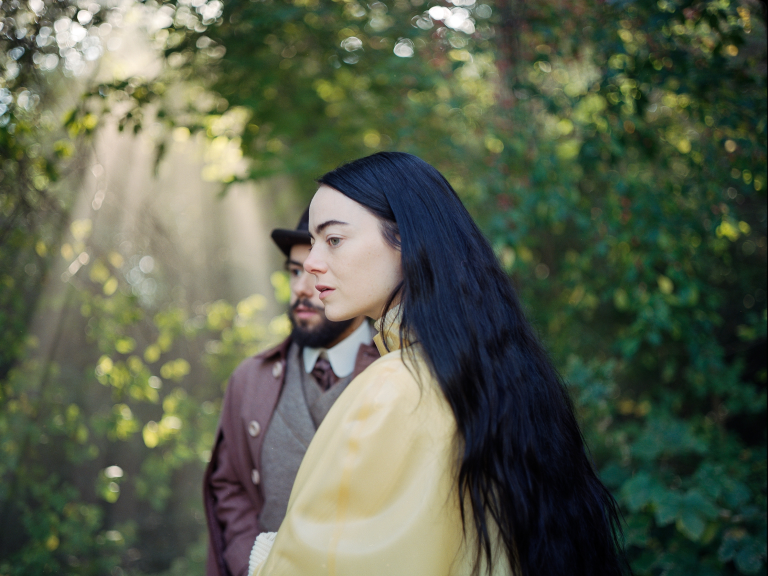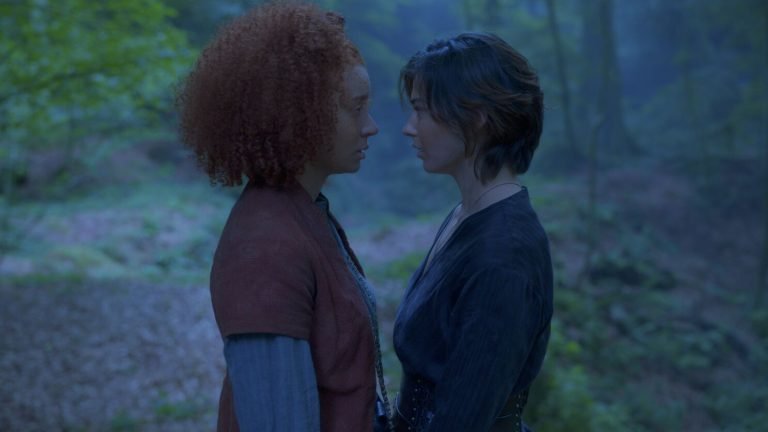American Vandal (2017-) – A Hilarious Mockumentary Probing into the Thorny Issues of ‘True-Crime’ Docs
Geeky senior student Alex Trimboli, compassionate Spanish teacher Ms. Shapiro, and the members of school board are absolutely shocked by what they had to witness on March 15th, 2016 at the premises of Hanover High School (situated in Oceanside, California). The faculty and student body are pretty sure who might have committed this appalling crime: unbelievably doltish teenager Dylan Maxwell. Dylan is immediately expelled after the school investigation and his chances of getting into college seem grim. Dylan maintains that he is innocent of the crimes, which make his truth-seeking school-mate and aspiring film-maker Peter Maldonado to do some sleuthing in order to get at the discomfiting truth. Peter our narrator muses, “Consider for a moment the type of person who would……… (commit this specific crime) What do they look like? Who do they hang out with? Where do they sit in the cafeteria? What kind of grades do they get?” Did Dylan really commit the crime or was he judged and punished based upon the crappy things he did in the past? Any way, what was Dylan accused of doing or what exactly unnerved the school board: spray-painting blood-red penises on the 27 cars of faculty members at the school parking lot. Will the border-line obsessed documentarian find out the answer to $100,000 (estimated damage to the vehicles) worth question: Who did the dicks?
Netflix’s four-hour (eight 30-35 minute episode) mockumentary American Vandal (2017-) smartly and hilariously borrows its visual and narrative cues from popular, endlessly debated true-crime docu series of the last few years. From using the cinematic cliff-hanger episode ending, manipulative musical cues of ‘The Jinx’ to incorporating the inevitably subjective perspective of podcast ‘Serial’ to repeatedly referencing to ‘Making a Murderer’s’ Steven Avery, creators Dan Perrault and Tony Yacenda’s true-crime spoof never limits itself to being a dumb dick-joke. Plenty of laughs are gained from witnessing the idiocy of the high-school goers, but it also satirizes far profound notions, especially about the popular, unmitigated craze for true-crime docu shows. Of course, it has quite a lot of raunchy and juvenile humor, but at the same time American Vandal surprisingly scrutinizes the unbridled power the camera possesses to manipulate its maker, subject, and the viewer (since it’s a spoof, half the laughs are understood if you have binged the aforementioned popular true-crime shows).
The first episode ends with questioning the character nature of school’s key witness: Alex Trimboli. Despite getting good grades, Alex is known to have lied about things to be popular amongst his peers. The most damning thing Alex has recently said about his level of acquaintance with class’ stunning beauty Sara Pearson makes Peter and Sam wonder. Hence, the 1st episode ends with a cliff-hanger question directed at Alex: ‘Did you get a hand-job from Sara Pearson?’ The series is riddled with such cleverly paced, if not absurdly funny, twists (even a trivial text msg of ‘Heyy!’ has an extra-layer of meaning). It boasts the questionable witness, pigeon-holed suspect, relentless investigator, suspicious authorial figure, and other far-more sinistral suspects. Thankfully, these stock character types perfectly work because they are authentically realized, in spite of the jokey scenario. The show runners brilliantly use the short 30-minute sketch to lampoon every true-crime trope, emphasizing the gravity of each unveiled clue with a laugh-inducing flourish (most memorable & hilarious moment is the graphic recreation of scenario at summer night camp to evaluate Alex’s hand-job story). And gradually as the infantile jokes wan to be replaced by the complicated yet subtly funny exploration of the crime’s complex tangents, we are enticed by rhythmic narrative trajectory. It’s like we are lured to assume or theorize the identity & motive of dick-drawing perpetrator, while at the same time we revel at the jibes made at this new, immensely favored form of documentary film-making.
American Vandal works largely because it is a solid and sincere version of the things it is mocking. From capturing self-contained serious-mindedness of the teenage characters to ably interlacing the diverse threads in content and form, the series simultaneously tells the story as well as satirizes it in unexpected ways. Despite the absurdity of the plot premise, there’s enough room left to root for the characters and glean their emotional response. The moments of clarity for Dylan towards the end provide a thought-provoking note which thoroughly breaks the initial expectations of the show being a one-note dick-joke. If most of the characters seem to confirm to the American high-school stereotypes, it’s because the show-creators are mocking the (student) film-makers reliance on pure assumption, regardless of their promise to stay glued to the facts. Perhaps, confining the spoof scenario to high school brings up pastiche of amusing observations (and kernels of truth). Beyond the silliness of high-schoolers’ fixation with snap-chat, Instagram, Facebook, twitch, etc, it showcases the general navel-gazing attitude and what it means to be in high-school today. Two minor characters in the school particularly stand out: relentless campaigner Christa Carlyle (who reminds us of Reese Witherspoon’s character in Alexander Payne’s “Election”) and the inappropriately funny history teacher Mr. Kraz (the man-child type reminds us of Rob Reiner’s seminal rockumentary ‘This Is Spinal Tap’).
Netflix’s American Vandal (2017–) starts off as a bawdy, ridiculous high school prank and ends up with truly engrossing meta-textual layers, deftly satirizing the growing true-crime craze. The preposterous high-schooler in me with a penchant for double entendre may say: the series digs deep and stays hard.
★★★★
Stream it Here.

